Botanic magic
By popular request (i.e. R.), some recent photies.
Botanics
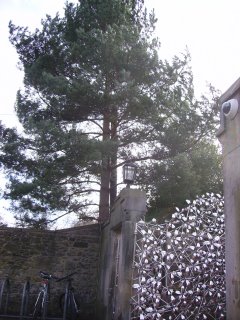 The routine is to meet by the Silver Gate (pic#1) to start our tours of the Gardens. Next, a downstream view of the trees and bogplants against a mackerel sky (#2), then my favourite old juniper at the base of the rockery (#3). It's quite laden with berries to squash between a thumb and forefinger and sniff deep. Same way a sprig of rosemary picked from an urban garden can sweeten your walk to the shops, if you look out for it on the way. Many junipers are dioecious (with male and female forms in separate individuals), so maybe this big mamma has a paramour somewhere else on the grounds. Photie #4 shows some of the lichen growth on her trunk- a super-organism with a symbiotic relationship between an alga and a fungus and a photosynthetic/saprophytic lifestyle. Using Tudge's 'Secret Life of Trees' and Vedel & Lang's 'Trees and Bushes' (1958), I achieve an approximate 50% hit rate at cold ID of the trees of interest at the Botanics.
The routine is to meet by the Silver Gate (pic#1) to start our tours of the Gardens. Next, a downstream view of the trees and bogplants against a mackerel sky (#2), then my favourite old juniper at the base of the rockery (#3). It's quite laden with berries to squash between a thumb and forefinger and sniff deep. Same way a sprig of rosemary picked from an urban garden can sweeten your walk to the shops, if you look out for it on the way. Many junipers are dioecious (with male and female forms in separate individuals), so maybe this big mamma has a paramour somewhere else on the grounds. Photie #4 shows some of the lichen growth on her trunk- a super-organism with a symbiotic relationship between an alga and a fungus and a photosynthetic/saprophytic lifestyle. Using Tudge's 'Secret Life of Trees' and Vedel & Lang's 'Trees and Bushes' (1958), I achieve an approximate 50% hit rate at cold ID of the trees of interest at the Botanics.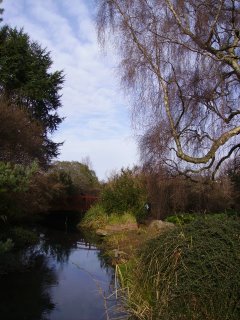
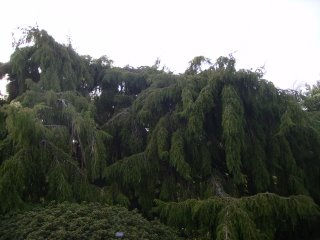
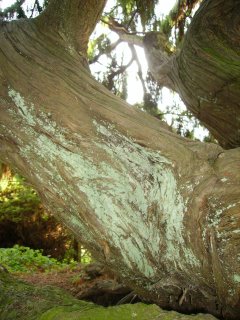
Braidburn
 These are profuse catkins on the hazel (?) pictured, another clade that's known for dioecious habits. Such tree/shrub catkins you can notice all around if you look, and they're wind-pollinators. It's still too cold in Feb or March for exothermic insect pollination, so dioecious plant reproduction is mostly facilitated by March winds, This strategy has many merits but is dependent upon a sufficient density of plants for successful fertilisation. ome junipers are suffering.
These are profuse catkins on the hazel (?) pictured, another clade that's known for dioecious habits. Such tree/shrub catkins you can notice all around if you look, and they're wind-pollinators. It's still too cold in Feb or March for exothermic insect pollination, so dioecious plant reproduction is mostly facilitated by March winds, This strategy has many merits but is dependent upon a sufficient density of plants for successful fertilisation. ome junipers are suffering.
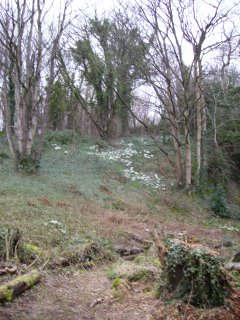 Snowdrops coming on strong. H. says that there's a fragrant abundance in the fields-over-by, and these were those in the Braidburn last week.
Snowdrops coming on strong. H. says that there's a fragrant abundance in the fields-over-by, and these were those in the Braidburn last week.


<< Home